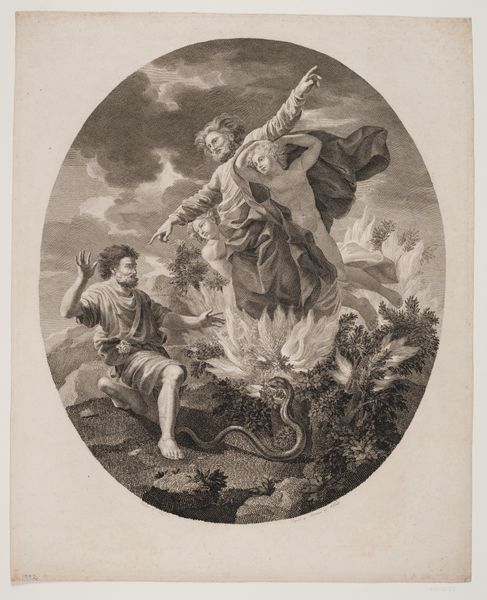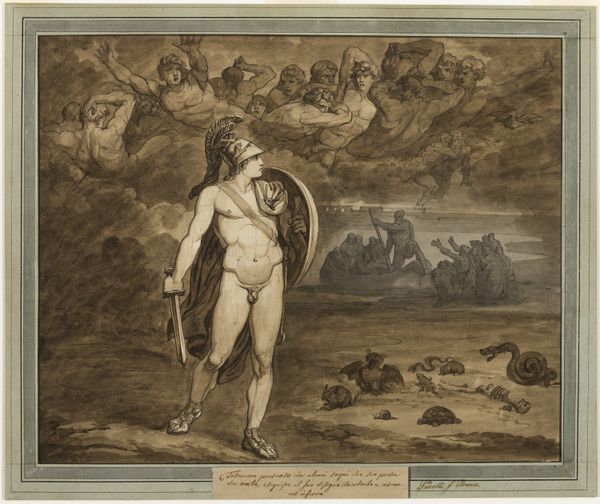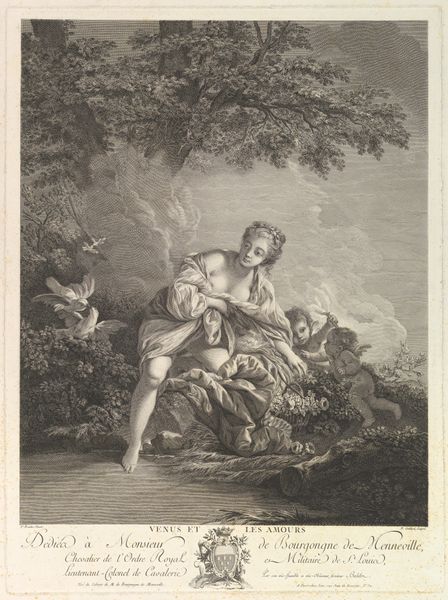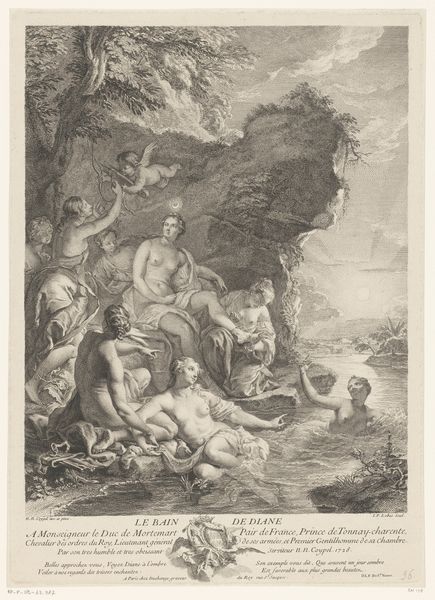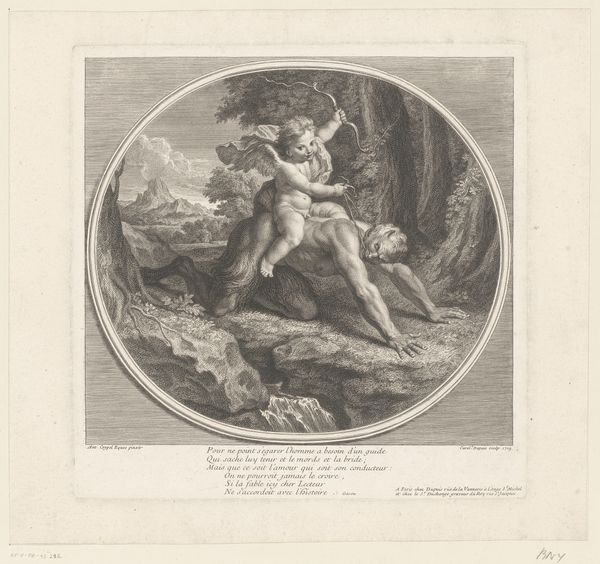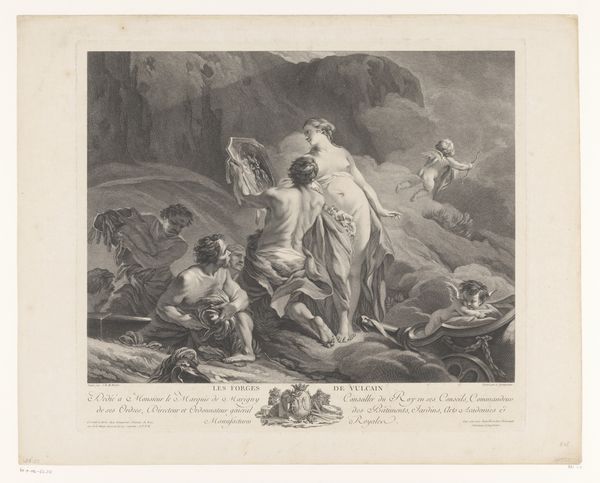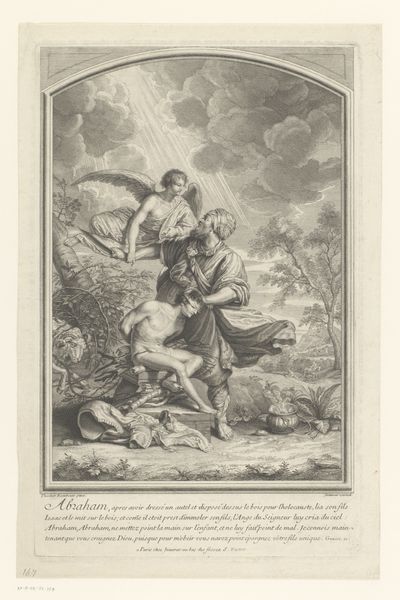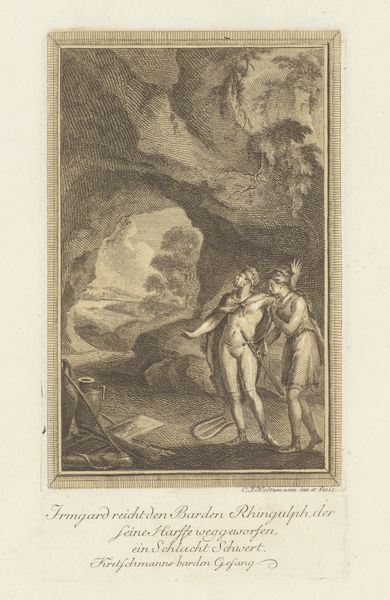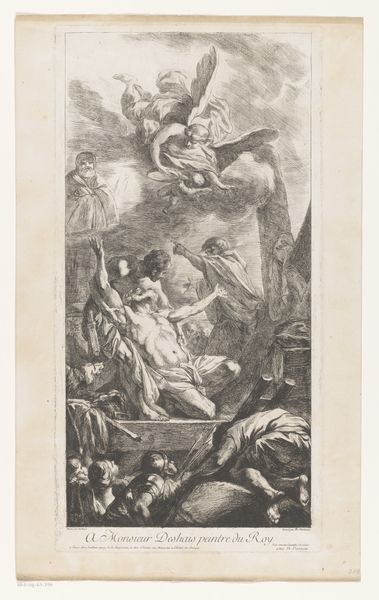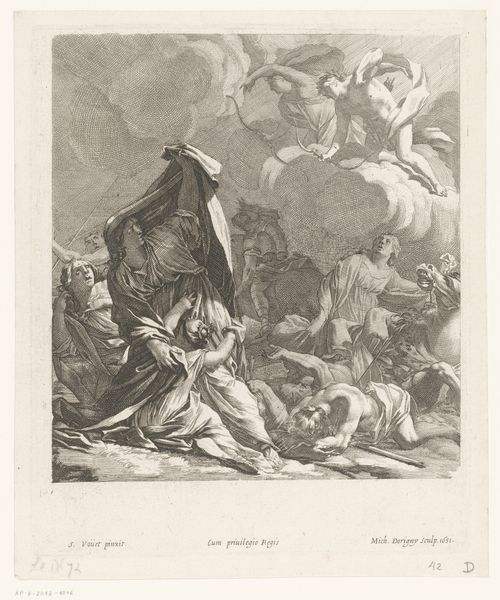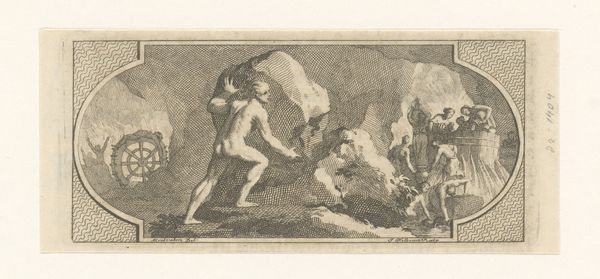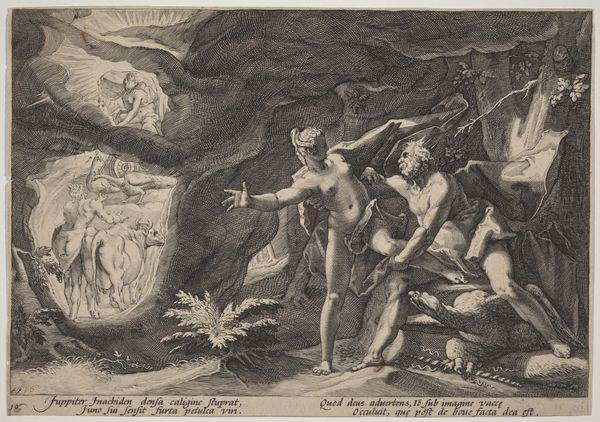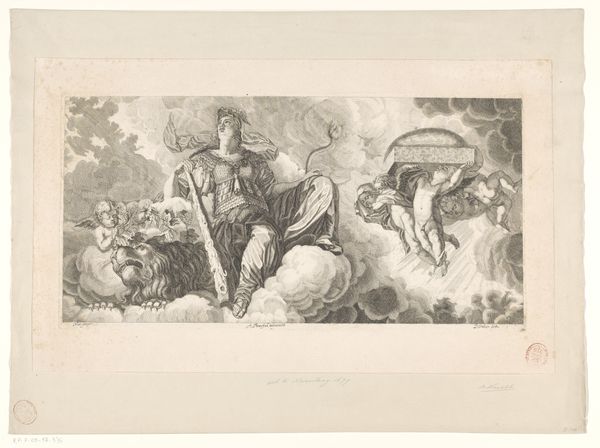
Dimensions: height 364 mm, width 487 mm
Copyright: Rijks Museum: Open Domain
This is Jean Daullé's rendition of "Cain and Abel," made in the 18th century. Note the expressive gestures: God points accusingly at Cain, while Cain throws his arms wide in horrified denial. These are primal gestures. The raised hand of accusation appears across millennia, from ancient legal pronouncements to Renaissance depictions of judgment. Similarly, Cain's open arms echo the "man of sorrows" motif, expressing grief and guilt. Both connect to our deepest emotional responses: the terror of divine judgment, and the agony of remorse. Consider, though, how the context shifts. In antiquity, open hands may signify innocence or a plea for mercy. Here, Daullé imbues it with the weight of fratricide and divine condemnation. What was once a gesture of supplication now reveals the burden of guilt. These symbolic gestures have been passed down through history, transformed by artists, and embedded in our collective consciousness. They engage us on a subconscious level, echoing the emotional drama of the biblical narrative. The image then serves as a reminder of the cyclical nature of guilt, judgment, and the enduring power of the human psyche.
Comments
No comments
Be the first to comment and join the conversation on the ultimate creative platform.
